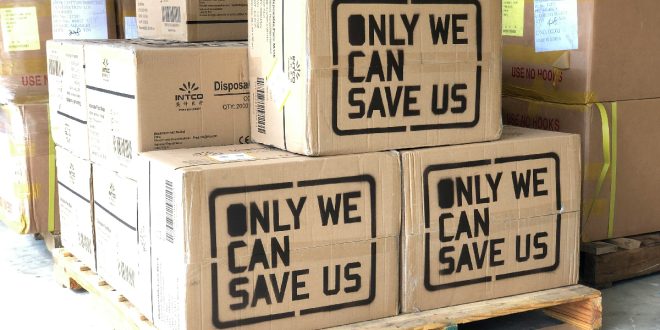The best way to label moving boxes is to use numbers or colors on them, so you and the movers can know which room they belong to. For example, using the color yellow on boxes that hold all of your kitchen stuff. Then, you would do the same for every other type of room, making the boxes easy to identify.
The difference between a smooth relocation and a chaotic unpacking nightmare often comes down to how well you labeled your moving boxes. Whether you’re preparing for a local move or a long-distance haul, developing a clear labeling strategy saves hours and prevents the frustration of searching through a bunch of boxes for a single item.
The must-do labeling techniques
Be quick when labeling the moving boxes
One of the most critical mistakes people make during packing is waiting to label their moving boxes. The moment you seal a box, label it immediately. This prevents the common scenario where you’ve packed multiple containers and can no longer remember which one holds your kitchen stuff.
Label the moving box on all sides
Labeling only the top of a box creates problems during transport and unpacking. Moving boxes get stacked, rotated, and shifted throughout the process. Professional handlers recommend marking at least three sides of every container:
- Place one label on top for when moving boxes sit flat
- Add labels on two sides for visibility when stacked
- Write in big letters
- Choose permanent markers that won’t smudge during handling
Best ways to organize your moving boxes while labeling
Add more detail to the labels
Knowing which moving boxes belong to which rooms eliminates confusion during unloading. Instead of generic labels like “kitchen” or “bedroom,” use specific identifiers that match your new floor plan. Write “Kitchen – Main” versus “Kitchen – Kids” or “Bedroom – Master” versus “Bedroom – Guest.” Many homeowners say this strategy cut their unpacking time nearly in half.
The best ways to color-code the moving boxes
Assign each room a distinct color using colored tape or markers. A few suggestions to make your move color-coded:
- Red for the living room
- Blue for the master bedroom
- Green for kitchen
- Yellow for bathrooms
- Purple for home office
- Orange for garage or storage
The color system provides instant recognition for anyone helping with the process. Experienced long-distance movers share that being able to tell where boxes belong without having to carefully read the labels always saves unloading time.
Use numbers when labeling moving boxes
Better yet, use numbers in order. Number each box consecutively and maintain a master list that records the number alongside its contents; it’ll help you count the boxes and check if there’s any missing down the line. You can even do it in priority order. For example:
- Boxes 1-10: Kitchen items
- Boxes 11-25: Living room belongings
- Boxes 26-30: Bathroom supplies
- Boxes 31-45: Master bedroom contents
A quick count reveals if anything went missing during transport, which proves especially important during long-distance relocations where belongings might transfer between vehicles.
The best tips for labeling moving boxes
Use good content descriptions
Room identification tells you where a box goes, but not what it contains. Adding brief content descriptions to each label transforms your organization’s system. Rather than writing exhaustive lists, use category descriptions:
- “Pots and pans – non-stick set”
- “Winter clothes – sweaters and coats”
- “Office supplies – paper and binders”
- “Bathroom – toiletries and towels”
For containers holding mixed items, list the three or four most important or frequently needed objects.
The first-night labeling method
The first-night labeling method means having all the items you need on the first night of your move in an easy box. So, label the box to make it extra easy to see and put it in the easiest-to-reach place in the move. Not all moving boxes need immediate attention after arrival. You can also go further and develop a priority coding system:
- Level 1 (Open Immediately): These are the first-night essential daily items, toiletries, medications, and basic kitchen supplies
- Level 2 (Open Within Days): Clothes, bedding, frequently used kitchen items
- Level 3 (Open Within Weeks): Books, decorations, seasonal items
- Level 4 (Storage): Holiday decorations, archived files, rarely used items
This priority system proves particularly valuable during staged unpacking situations where you’re living in the space while gradually organizing.
How to label fragile moving boxes
Use big letters, obvious colors, and add any extra fluff you think would make it easier to understand how important that box is. Here are a few more ideas:
- Write “FRAGILE” in bold letters on all sides
- Add specific warnings like “Glass” or “Electronics”
- Include handling instructions such as “This Side Up”
- Use bright red or orange tape for visual distinction
Some experienced movers recommend using bright colored paper or tape specifically for fragile moving boxes, creating a visual distinction from standard containers.
How to avoid labeling mistakes on moving boxes
Labeling moving boxes for long-distance
Writing your family name is one of the most important things when labeling moving boxes for long-distance moves. When multiple shipments share truck space, clear identification prevents mix-ups. Use your last name prominently on each box, especially if belongings might switch vehicles during transport. This simple addition protects against lost items when your possessions share space with other shipments.
Re-using moving boxes from previous moves
Many people use previously labeled moving boxes from grocery stores or previous moves. Old markings create confusion during the current relocation:
- Cover previous labels completely with new ones
- Use colored paper to mask outdated information
- Apply new labels over old text rather than beside it
- Ensure current labels are clearly visible and distinct
These steps prevent confusion when handlers see multiple conflicting labels on the same container in a move.
Master List Documentation
Keep a master list with all your labeling information for the move in one easy location. Record box numbers, room assignments, color codes, and priority levels:
- Make Google Sheets specifically for your move and download them to your phone and computer
- Print physical copies to post at both locations
- Share the list with anyone helping during the process
- Update it as you pack each container
Having this organized documentation turns moving boxes into an easy-to-search system that anyone can use and browse efficiently.
Conclusion: Labeling moving boxes properly saves hours
Good labeling saves unpacking time and avoids headaches for short and long-distance moves. What might take hours to unpack from unlabeled moving boxes can often be done in minutes if you use good labeling tips. The secret is choosing the best labeling tips for your specific move and actually doing them on every box.
 Blogging Heros
Blogging Heros




